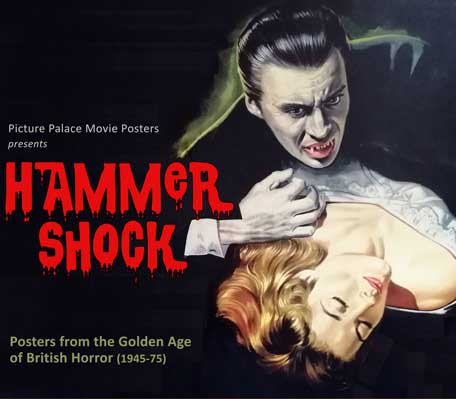POSTER SIZES
These are some of the most common sizes (height x width), however it’s important to remember that sizes can still vary from poster to poster.
Great Britain
GB Front of House Cards (8" x 10")
GB Lobby Cards (11" x 14")
GB Crown (15" x 20")
GB Liftbill (22.5" x 16")
GB Half Sheet (22" x 28")
GB Double Crown (30" x 20")
GB Quad Crown (30" x 40")
GB One Sheet (40" x 27")
GB Three Sheet (81" x 40")
GB Door Panel (60" x 20"-22")
GB Four Sheet (60" x 40")
GB Twelve Sheet (81” x 81”)
GB Sixteen Sheet (120" x 80")
GB Forty-Eight Sheet (120" x 240")
USA
US Lobby Cards (11" x 14")
US Window Card (22" x 14")
US Half Sheet (22" x 28")
US Insert (36" x 14")
US One Sheet (41" x 27")
US Three Sheet (81" x 41")
US Subway (41" x 54")
US 40 x 60 (60" x 40")
US Six Sheet (81" x 81") (though this can vary by a couple of inches)
Australia
OZ Daybill (30" x 13")
OZ One Sheet (40" x 27")
OZ Three Sheet (80" x 41")
France
French Petite (22" x 15")
French Affiche (30" x 22")
French Affiche (43" x 24")
French Grande (63" x 47")
Italy
Italian Photobusta (14" x 20")
Italian Photobusta (18" x 26")
Italian Locandina (13" x 27")
Italian One Sheet (28" x 39")
Italian Two Foglio (55" x 39")
Italian Four Foglio (55" x 78")
Germany
German A1 (23" x 33")
German A0 (46" x 33")
Japan
Japanese B0 (40" x 58")
Japanese B1 (40" X 29")
Japanese B2 (20" x 29")
Others
Argentinian One Sheet (29" x 43")
Belgian Affiche (14" x 19-22")
Danish One Sheet (24" x 33")
Mexican One Sheet (26" x 39")
Spanish One Sheet (27" x 39")
Swedish One Sheet (23" x 33")
Swedish One Sheet (27" x 40")
CONDITION GRADING
Remember, all our posters are genuine vintage originals, many being well over 50 years old, so will show to a lesser or greater degree their history and character… but then, that’s part of the whole appeal of owning a genuine original piece of movie history!
***** BEES KNEES! Pretty much as issued!
**** EXCELLENT: minimal wear and possible light handling
*** V GOOD: light wear with possible pin holes and edge nicks
** GOOD: intact, but with possible tears, pin holes and stronger handling
* FAIR: heavy wear, tears and possible paper loss. (Generally we wouldn’t offer a poster in this condition unless it was exceptionally rare.)
GUIDE TO CONSERVATION FRAMING
Having invested in your precious poster(s) it is very important indeed to make sure you use a framer who is experienced in handling delicate and valuable artworks. Not all framers are the same! Many general high street framers simply don’t understand the specific requirements for conserving your poster safely for years to come. I’ve seen a lot of damage done by inexperienced framers over the years. Damage which can be very expensive to put right (if it’s possible to fix at all) and should never have happened. So here are a few questions you should ask your framer before going ahead:
1. Do you use conservation materials throughout?
If they don’t know or the answer is ‘no’, don’t use them!
2. How do you fix my poster?
In an ideal world nothing should be attached to the poster, but if it is being hinged make sure they use only archival, reversible tabs. If they suggest dry mounting run a mile! This is a process where the poster gets stuck down onto board and, unlike linen backing, is pretty much irreversible. This will completely destroy any value your poster may have!
3. What glass do you recommend?
Posters should always be framed with a minimum of 99% UV protection glass or the equivalent Perspex, depending on size and weight. More valuable posters can be framed with museum glass, which offers full protection and ultimate clarity… but be warned, this does cost, but if the value of the poster warrants it, they look amazing.
4. Will my poster be against the glass?
From a conservation perspective, it’s very important your poster isn't squashed against glass. This can seriously damage the poster over time, potentially causing condensation staining, sticking and patching, surface damage or actual paper loss (especially if the glass gets broken!). There are various ways a poster can be kept off the glass and a true conservation framer will be able to advise the best solution.
5. What goes on the back?
Importantly there should always be an acid free conservation barrier board directly behind the poster. Most conservation framers will also use a wax coated outer backboard to repel any dampness. Standard MDF will absorb water and in the worst case scenario, transfer the dampness into the frame, causing your poster to cockle (cockling is where the paper distorts and becomes wavy) or even worse, propagate the growth of mold!! Once this has happened it is very difficult to get the poster to ever lay flat again as the paper is actually fundamentally damaged. So avoid! When it comes to handling valuable paper, prevention is most definitely better than cure.
WE BUY MOVIE POSTERS!
Asking yourself "where can I sell my original vintage movie posters"? Well, right here! We’re always interested in buying or consigning good quality posters, especially from 1940-1970. So if you, or someone you know, has a specific poster or a whole collection for sale, please don’t hesitate to get in touch for FREE advice by calling Mark on 07790 802146 or emailing details with images to info@picturepalacemovieposters.co.uk
These are some of the most common sizes (height x width), however it’s important to remember that sizes can still vary from poster to poster.
Great Britain
GB Front of House Cards (8" x 10")
GB Lobby Cards (11" x 14")
GB Crown (15" x 20")
GB Liftbill (22.5" x 16")
GB Half Sheet (22" x 28")
GB Double Crown (30" x 20")
GB Quad Crown (30" x 40")
GB One Sheet (40" x 27")
GB Three Sheet (81" x 40")
GB Door Panel (60" x 20"-22")
GB Four Sheet (60" x 40")
GB Twelve Sheet (81” x 81”)
GB Sixteen Sheet (120" x 80")
GB Forty-Eight Sheet (120" x 240")
USA
US Lobby Cards (11" x 14")
US Window Card (22" x 14")
US Half Sheet (22" x 28")
US Insert (36" x 14")
US One Sheet (41" x 27")
US Three Sheet (81" x 41")
US Subway (41" x 54")
US 40 x 60 (60" x 40")
US Six Sheet (81" x 81") (though this can vary by a couple of inches)
Australia
OZ Daybill (30" x 13")
OZ One Sheet (40" x 27")
OZ Three Sheet (80" x 41")
France
French Petite (22" x 15")
French Affiche (30" x 22")
French Affiche (43" x 24")
French Grande (63" x 47")
Italy
Italian Photobusta (14" x 20")
Italian Photobusta (18" x 26")
Italian Locandina (13" x 27")
Italian One Sheet (28" x 39")
Italian Two Foglio (55" x 39")
Italian Four Foglio (55" x 78")
Germany
German A1 (23" x 33")
German A0 (46" x 33")
Japan
Japanese B0 (40" x 58")
Japanese B1 (40" X 29")
Japanese B2 (20" x 29")
Others
Argentinian One Sheet (29" x 43")
Belgian Affiche (14" x 19-22")
Danish One Sheet (24" x 33")
Mexican One Sheet (26" x 39")
Spanish One Sheet (27" x 39")
Swedish One Sheet (23" x 33")
Swedish One Sheet (27" x 40")
CONDITION GRADING
Remember, all our posters are genuine vintage originals, many being well over 50 years old, so will show to a lesser or greater degree their history and character… but then, that’s part of the whole appeal of owning a genuine original piece of movie history!
***** BEES KNEES! Pretty much as issued!
**** EXCELLENT: minimal wear and possible light handling
*** V GOOD: light wear with possible pin holes and edge nicks
** GOOD: intact, but with possible tears, pin holes and stronger handling
* FAIR: heavy wear, tears and possible paper loss. (Generally we wouldn’t offer a poster in this condition unless it was exceptionally rare.)
GUIDE TO CONSERVATION FRAMING
Having invested in your precious poster(s) it is very important indeed to make sure you use a framer who is experienced in handling delicate and valuable artworks. Not all framers are the same! Many general high street framers simply don’t understand the specific requirements for conserving your poster safely for years to come. I’ve seen a lot of damage done by inexperienced framers over the years. Damage which can be very expensive to put right (if it’s possible to fix at all) and should never have happened. So here are a few questions you should ask your framer before going ahead:
1. Do you use conservation materials throughout?
If they don’t know or the answer is ‘no’, don’t use them!
2. How do you fix my poster?
In an ideal world nothing should be attached to the poster, but if it is being hinged make sure they use only archival, reversible tabs. If they suggest dry mounting run a mile! This is a process where the poster gets stuck down onto board and, unlike linen backing, is pretty much irreversible. This will completely destroy any value your poster may have!
3. What glass do you recommend?
Posters should always be framed with a minimum of 99% UV protection glass or the equivalent Perspex, depending on size and weight. More valuable posters can be framed with museum glass, which offers full protection and ultimate clarity… but be warned, this does cost, but if the value of the poster warrants it, they look amazing.
4. Will my poster be against the glass?
From a conservation perspective, it’s very important your poster isn't squashed against glass. This can seriously damage the poster over time, potentially causing condensation staining, sticking and patching, surface damage or actual paper loss (especially if the glass gets broken!). There are various ways a poster can be kept off the glass and a true conservation framer will be able to advise the best solution.
5. What goes on the back?
Importantly there should always be an acid free conservation barrier board directly behind the poster. Most conservation framers will also use a wax coated outer backboard to repel any dampness. Standard MDF will absorb water and in the worst case scenario, transfer the dampness into the frame, causing your poster to cockle (cockling is where the paper distorts and becomes wavy) or even worse, propagate the growth of mold!! Once this has happened it is very difficult to get the poster to ever lay flat again as the paper is actually fundamentally damaged. So avoid! When it comes to handling valuable paper, prevention is most definitely better than cure.
WE BUY MOVIE POSTERS!
Asking yourself "where can I sell my original vintage movie posters"? Well, right here! We’re always interested in buying or consigning good quality posters, especially from 1940-1970. So if you, or someone you know, has a specific poster or a whole collection for sale, please don’t hesitate to get in touch for FREE advice by calling Mark on 07790 802146 or emailing details with images to info@picturepalacemovieposters.co.uk

|
HAMMER SHOCK
Posters from the Golden Age of British Horror (1945-75) |
| Click to view the catalogue | |
WE BUY MOVIE POSTERS!
Asking yourself "where can I sell my original vintage movie posters?" Well, right here! We’re always interested in buying or consigning good quality posters, especially from 1920-1970. So if you, or someone you know, has a specific poster or a whole collection for sale, please don’t hesitate to get in touch for FREE advice on 07790 802146 or emailing details with images to info@picturepalacemovieposters.com
GUARANTEED 100% ORIGINAL VINTAGE MOVIE POSTERS
Picture Palace Movie Posters is the website for original, vintage, collectible movie posters. We guarantee to only deal in the very best original, most desirable rare film posters from 1920-1980 (with an emphasis on great art and design of 1940's-1960's) and have a special interest in Hammer Horror, James Bond 007, Carry On films, Hollywood Classics, Ealing Studios and Monster B Movies.
So, if you are looking for rare, original movie posters issued by the studios for use in cinemas, then you’ve come to the right place! We only sell 100% genuine original cinema posters and guarantee everything we sell. We have many years of experience as collectors ourselves. In fact, Mark Barrow, the owner of Picture Palace Movie Posters, is also a fine art dealer with over 25 years experience specialising in original Modern British Art of the 1920s-1980s, so when it comes to vintage movie posters, it's all about the quality of the art and design!
We spend a lot of time researching each and every poster we offer so you can be completely confident in the description and condition. Also, we only upload images of the actual poster being offered, whereas some sites use 'stock' images. Our policy is 100% transparency - we want you to be completely happy with your purchase. So, if you are building a collection or just starting out, www.picturepalacemovieposters.com is here to help, advise and generally hold your hand through what can be a very confusing marketplace!
VIEWING POSTERS
We're always very happy to show you any posters you may be interested in by appointment, so feel free to call Mark on 07790 802146 or email info@picturepalacemovieposters.com
OUR PROMISE TO YOU
We guarantee all the posters we sell to be 100% genuine originals, so you can buy with total confidence. We DO NOT sell reproductions… ever! We’re so confident you’ll be pleased with your purchase that we offer a complete 15 day money back guarantee. So if, for any reason, you’re not 100% happy, simply return the item using the original packing with secure postage, and once we have confirmed receipt in the same condition it was sent to you, we’ll refund your purchase price.
Please just contact us on info@picturepalacemovieposters.com to let us know before shipping though.
PRIVACY POLICY
We guarantee to never sell, share or otherwise abuse your personal details. We hate spam as much as you, so will always respect your privacy and the trust you've placed in us.
JOIN OUR FREE FILM CLUB!
To receive all the latest updates, special offers and news from Picture Palace Movie Posters simply CLICK HERE to join now!
You can also visit us on social media
www.facebook.com/picturepalacemovieposters
www.twitter.com/ppmovieposters
uk.pinterest.com/ppmovieposters
RECOMMENDED PARTNERS
Do you remember the thrill and excitement of Saturday morning pictures? Where heroes and villains and clowns and crooners would entertain you for hours. Well, now you can relive some of the rarest and greatest gems from film history as Talking Pictures TV has it all! Available on Virgin 445, Freesat 306, Freeview Channel 81, Youview 81 or on Sky channel 328.
Gecko are Europe’s leading home cinema designers and installation specialists, which is why Picture Palace Movie Posters are happy to partner with them. So if you want to enjoy Film, TV, Music and Sport at its very best, you’ll find Gecko systems are without equal. Contact Rob Sinden for a free no obligation chat (and don't forget to mention PPMP!).
LEGAL STUFF
Click here to read our Privacy Policy

